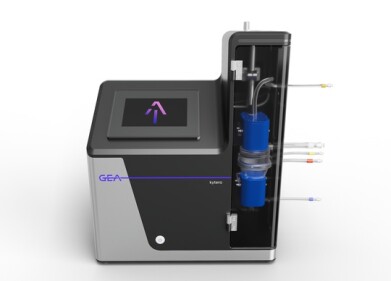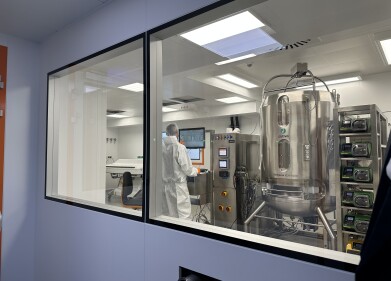Laboratory products
What is Click Chemistry? Everything You Need to Know
Oct 07 2022
When it comes to the recognition of life-changing science, the Nobel Prize is the ultimate honour. This year, American chemists Karl Barry Sharpless and Carolyn R. Bertozzi and Danish chemist Morten Meldal were co-recipients of the highly prestigious Nobel Prize in Chemistry 2022. According to the panel, the trio were recognised “for the development of click chemistry and bioorthogonal chemistry”.
Click Chemistry: 101
So, what exactly is click chemistry. The catchy, cleverly alliterated term takes a back-to-basics approach to chemistry. Simple and efficient, it uses basic chemical reactions to snap molecules together and create building blocks. The mechanics of click chemistry have been compared to Lego building blocks, which can easily be snapped together.
Function is the ultimate goal of click chemistry. Ultimately, the framework was developed to allow both chemists and scientists with other skills to create molecular building blocks. The use of simplified ‘click’ reactions has demystified the realm of molecular manipulation. Thanks to Sharpless, Bertozzi and Meldal, scientists working across a range of fields can ‘click’ molecules together and discover useful properties.
“Its success can be judged by how well it allows chemists and non-chemists alike to harness the power of molecular manipulation for the discovery and optimization of useful properties,” write the authors in an article published in the journal Chemical Reviews. “But for those of us who are fortunate enough to be able to study molecular reactivity in its own right - for whom the behaviour of molecules rises to the level of personality - click chemistry is also the pursuit of profound beauty. In other words, for both fundamental and practical reasons, it is great fun.”
A simplified approach to science
According to The Royal Swedish Academy of Sciences, the Nobel Prize in Chemistry 2022 is awarded to scientists that simplify difficult processes. Karl Barry Sharpless and Morten Meldal did just this with the development of click chemistry. The term describes the process of snapping molecular building blocks together in a way that’s fast, simple and efficient. Carolyn Bertozzi took the concept of click chemistry to the next level by utilising it in living organisms.
“This year’s Prize in Chemistry deals with not overcomplicating matters, instead working with what is easy and simple. Functional molecules can be built even by taking a straightforward route,” explains Johan Aqvist, a Professor of Theoretical Chemistry at Uppsala University in Sweden and Chair of the Nobel Committee for Chemistry.
“This year’s Prize in Chemistry deals with not overcomplicating matters, instead working with what is easy and simple. Functional molecules can be built even by taking a straightforward route,” explains Johan Aqvist, a Professor of Theoretical Chemistry at Uppsala University in Sweden and Chair of the Nobel Committee for Chemistry.
For decades, chemists have been motivated to build complex molecules. This has been especially useful for pharmaceutical research, with chemists using building blocks to replicate natural molecules with therapeutic properties. While the creation of complex molecules has helped drive research in the pharmaceutical sector and other industries, the process is labour and cost intensive. Click chemistry counteracts this trend with a simplified approach. The goal is to trigger fast reactions and avoid the creation of unnecessary biproducts.
The advent of click chemistry
Karl Barry Sharpless was an early pioneer of click chemistry and coined the concept in 2000. This was followed by the introduction of the copper catalysed azide-alkyne cycloaddition. The development of this copper ion catalyst transformed how scientists spark chemical reactions.
Unlike other catalysts, copper ions don’t require high heat. Instead, ultra-efficient chemical reactions can be triggered at room temperature. Water can also be used as a solvent for copper ions catalysts. This eliminates the need for ‘heavier’ solvents that could damage molecules. It was the introduction of the copper ion catalyst that revolutionised how scientists connect and manipulate molecules.
Introducing bioorthogonal chemistry
Carolyn Bertozzi built on the concept of click chemistry by creating reactions inside living organisms. While copper catalysts are effective, the metallic chemical element can be toxic to living organisms. Bertozzi addressed this by developing a copper-free form of click chemistry.
So, how does it work? Traditional click chemistry uses a copper catalyst to snap molecules together in straight lines. Bertozzi removed the copper catalyst to stabilise the reaction and make it safe for use in living organisms. This modified the straight-line pattern and forced the molecules to bend at right angles.
By creating chemical reactions that are “parallel” to the cellular environment, Bertozzi was able to snap molecules together without affecting the natural biochemical processes of the cell. She named the technique bioorthogonal chemistry, a nod to the shape of the molecular bonds created during the process.
Revolutionising cancer treatments
She used the technique to map key biomolecules, known as glycans, found on the surface of cells. Click chemistry allowed the bioorthogonal reactions to unfold without affecting cellular chemistry. Today, scientists around the world use the bioorthogonal reactions spearheaded by Carolyn Bertozzi to analyse cellular activity and monitor biological processes. The benefits have been especially profound in the cancer research field, where scientists are using bioorthogonal reactions to improve the efficiency of cancer pharmaceuticals and develop targeted medicines.
Bertozzi explains how bioorthogonal reactions allow scientists to carry out “chemistry inside human patients to make sure that drugs go to the right place.” Lessening the effects of chemotherapy is one goal currently being explored at click chemistry labs. Bertozzi and her team are also using click chemistry to develop potential treatments for COVID-19. Adding a fluorescent glow to Legionella bacteria is another novel application for click chemistry. The goal is to make the disease-causing bacteria easier to detect in public water supplies.
“Click chemistry and bioorthogonal reactions have taken chemistry into the era of functionalism,” reads the press release published on the Nobel Prize website. “This is bringing the greatest benefit to humankind.”
Mapping DNA with click chemistry
As well as being used to develop pharmaceutical products, the copper catalysed azide-alkyne cycloaddition allows scientists to map DNA. “The applications are almost endless,” says Tom Brown, a chemist at Oxford University who has used click chemistry to map DNA.
Beyond healthcare and pharmaceuticals, click chemistry is revolutionising the materials sector. The technique is being used to develop ultra-durable polymers and other materials. In nano-chemistry, click chemistry is being used to create glue powerful adhesives that bond surfaces together.
“Two decades later, we are now in the midst of a new wave of click chemistry, featuring both the continuous development of reaction methods and their ever-faster adoption across scientific disciplines,” reads the article published in the journal Chemical Reviews.
Bringing chemistry to the masses
In the Chemical Reviews article, the authors explain how use of the world ‘click’ is intended to capture the satisfaction, convenience and efficiency of snapping a seatbelt into place or securing a luggage strap. Despite being relatively simple, the concept has made a huge mark in the scientific world.
“This powerful idea - that good chemistry can enable impactful chemical entities to be created by anyone - has motivated or supported an enormous range of endeavours in many fields including materials science, surface science, analytical chemistry, chemical biology, and drug development,” write the authors.
The “green chemistry” angle
Another major benefit of click chemistry is the “green” angle. The framework complies with an approach called “green chemistry” designed to minimise the use and creation of toxic substances. In the midst of the climate and air pollution crises, green chemistry is more relevant than ever.
The United States Environmental Protection Agency asserts “green chemistry applies across the life cycle of a chemical product, including its design, manufacture, use, and ultimate disposal.”
Click chemistry adheres to the principles of “green chemistry” by taking a simple and efficient approach to science. Traditionally, building complex chemical structures generates a huge amount of toxic waste and by-products. For most labs, the process drains time, money and resources. From an environmental perspective, molecular manipulation can use a huge amount of energy and electricity.
The IKEA flatpack analogy
Sharpless and Meldal addressed this issue by taking a minimalist approach to molecular building blocks. They cherry picked a handful of efficient and high-yielding reactions that provide chemists with the tools they need to synthesise chemical structures. The Nobel committee compares the click chemistry framework to IKEA flatpack furniture. By providing scientists with building blocks (the different parts of furniture) and simple tools like Allen keys (the highly efficient reactions), Sharpless and Meldal make molecular chemistry accessible to all.
Click chemistry for the greater good
As mentioned earlier, monitoring water quality is an exciting new application for click chemistry. Want to know more about how science is used to detect pollutants and bacteria, maintain safe levels of chemicals and protect public health? Nick Jones, an inhouse expert at analytical instrumentation manufacturer LECO Corporation, spotlights the latest advances in techniques like Gas Chromatography (GC) coupled with Time-of-Flight Mass Spectrometry (TOFMS) in ‘Environmental Water Analysis: Expand Your Toolbox’.
Digital Edition
ILM 50.2 March 2025
March 2025
Chromatography Articles - Effects of small deviations in flow rate on GPC/SEC results Mass Spectrometry & Spectroscopy Articles - Waiting for the present to catch up to the future: A bette...
View all digital editions
Events
Mar 17 2025 Milan, Italy
Mar 18 2025 Beijing, China
Mar 20 2025 Brussels, Belgium
Mar 20 2025 Chandigarh, India
ACS National Meeting & Expo, Spring 2025
Mar 23 2025 San Diego, CA, USA



















